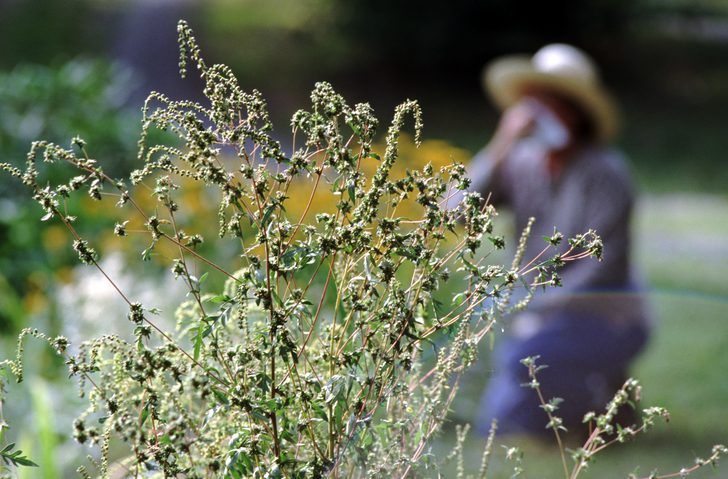Picture a large, complex society made up of entities that burrow through your yard, swarm around your doors, and lurk in your house for years, patiently eating away at your walls—causing damage that you’re not even aware of. This isn’t the plot of some awful horror movie. It’s a common ordeal faced every day by homeowners across the nation: termite infestation.
According to the United States Environmental Protection Agency (EPA), “every year termites cause billions of dollars in structural damage, and property owners spend over two billion dollars to treat them.” But as common as the problem is, it can be difficult to tell whether your home has a termite issue. Treatment options can also be confusing—or even dangerous.
Wondering how to spot termites on your property and what to do if you find them? Here are some basic tips.
Types of Termites and Where They Live
The types of termite found in the United States are the:
- Eastern subterranean termite (Reticulitermes flavipes): This is the most common termite species in the U.S. Subterranean termites tunnel through the earth to reach food sources above ground. They can build mud tubes along exterior walls in order to access moist wood that doesn’t make contact with the ground.
- Drywood termite (Incisitermes snyderi): The second most common termite species typically can be found in the coastal South and the Southwest. Drywood termites live in places like walls, decks, fences, and furniture, and are also commonly discovered in attics.
- Dampwood termite (Zootermopsis angusticollis): This termite inhabits decaying wood and is found along the West Coast, in the Southwest, and in Florida.
- Formosan termites (Coptotermes formosanus): This type of subterranean termite is found in Hawaii and a number of Southern states. They are known for being particularly aggressive and destructive.
How to Identify Termites
In North America, there are dozens of species of termites, and they vary in size, color, and shape. Usually, termites are about one-fourth to one-half inch long, although kings and queens may be longer than one inch.
Termites are often confused with flying ants. But for you amateur entomologists, there are a few differences to look out for:
- Ants’ front wings are longer than their back wings; termites’ front and back wings are equal in length.
- Ants have antennae that bend at a 90-degree angle; termites have antennae that are straight or drooping.
- Ants have a narrow waist, but termites do not.
Your state’s government or university extension program may provide additional resources to help you identify termites. For example, the Maryland Department of Agriculture offers regionally appropriate information.
Termite Behavior
Termites live in colonies, which are split into castes that perform different functions:
- Workers have soft, light-colored bodies. They cause most wood damage.
- Soldiers are yellow-brown with large heads and jaws. They defend the colony.
- Reproductives are darkest and have two pairs of wings. After they mate, they lose their wings and become the kings and queens of their new colonies.
All types of termites eat cellulose-based plant materials (i.e., trees and plants, either living or dead). They also eat paper, drywall, and other materials, and can chew their way through books, furniture, and even the foundation of a house. Different types of termites prefer different environments and diets, as the names “drywood termite” and “dampwood termite” suggest.
Signs of Termites
When they recycle dead timber in the forest, termites are beneficial to the environment. But when they come in contact with human homes, termites are destructive. They can cause major damage to wooden structures, metal siding, and plastics.
If you see flying termites or break open a mud tunnel to find subterranean termites within, that’s a clear cause for concern.
But termites can be present on your property for years without showing themselves or causing visible damage. Absent any obvious signs, how can you tell whether you have termites?
- Use a screwdriver to examine exposed wood for hollow spots.
- Knock on wood structures, listening for a hollow sound.
- Inspect places where concrete and wood meet.
- Pay special attention to the wood in basements and under porches.
- Check fences and tree stumps.
- Look out for wings. Flying termites lose their wings after they swarm in the warmer months. These wings can signal a new colony of termites.
- Unexplained piles of small pellets could also indicate a termite presence as they could be termite frass, or droppings.
How to Deter Termites
One of the best ways to deter termites is by planning ahead. If you’re constructing a new addition or home, cover exposed sections of wood with a sealant. And avoid direct contact between the wood of your house and the soil to curtail any future problems. Don’t apply mulch directly against your home’s foundation. Instead, leave eight to 12 inches of space.
If your house was already standing when you moved in, you can still take precautions against future infestations.
- Don’t plant trees or shrubbery, or pile firewood or debris, too close to your home.
- Keep vents free from foliage or other blockages.
- Fix any leaks or cracks you discover.
And even if you’re currently problem-free, check your home regularly for any changes (e.g., damaged wood or cracks in the brick or concrete) in order to catch possible issues early on.
How to Get Rid of Termites
If you do notice termites or signs of termite damage on your property, you have several treatment options. Non-chemical treatments include barriers such as steel mesh and sand, but most treatments are chemical, involving the use of pesticides.
Some pesticides are classified as “minimum risk,” meaning they’re unlikely to harm humans or the environment. But most of those used against termites—called termiticides—must be licensed by the EPA and applied by a pest management professional. A trained professional may apply liquid pesticides to soil, wood, or building materials, often in combination with termite baits.
If you decide to treat the infestation on your own, make sure to carefully read and follow the directions for any products you use to ensure your safety as well as that of your family, pets, property and the environment.
Remember! If used incorrectly, termiticides—many of which are toxic—can contaminate your home or nearby wells.
When to Call an Exterminator
If you’re inexperienced with pesticides or uncomfortable about the idea of working with potentially hazardous chemicals, it’s a good idea to call an exterminator. A trained professional will know how to use these chemicals safely, as well as how to treat for termites most effectively.
If your termite problem is more serious than you believe you can handle yourself—especially if it has reached the point where physical damage or infestation is visible—it’s a good time to turn to a professional.
And, of course, if you suspect a termite infestation, but are unable to correctly identify termites or termite damage, it may make sense to reach out to someone sooner rather than later.
How to Choose an Exterminator
Finding a reputable pest control company can feel daunting. If you’ve found one that you’re interested in working with, first, make sure that the company is licensed by your state and properly insured. Additionally, pay attention to other customers’ experiences—either through word-of-mouth referrals from friends and neighbors or online reviews—to learn more about the company’s effectiveness and customer service satisfaction.
Whether you’re actively looking for an exterminator or not, be wary of anyone who shows up at your door offering an inspection or treatment. If you’re considering working with an exterminator who has approached you, proceed with caution and get a second opinion to compare pricing and services.
The EPA’s Citizen’s Guide to Pest Control and Pesticide Safety offers additional tips on how to choose a service provider (e.g., it’s a good sign if a company is affiliated with a professional pest control association), as well as other useful information about termite control.
Just thinking about termites, let alone prodding your walls to see whether you uncover any, can be a bit scary and, frankly, extremely unpleasant. But getting on top of this potentially serious issue is essential. Preventing termite damage, and treating it properly if it does occur, will help ensure that your home stays comfortable and safe.
Termites are just one pest that can invade your home. Share in the comments your experience with nature’s creatures trying to live rent-free in your home.







If your back sliding door has some kind of sand debris coming through it , and other windows also in the other rooms , what could it be
Very Informative article. This should not be overlooked
Very good article. I always cringe when I see people stack firewood next to their house or barn. It is a great “ladder” for termites to use to invade these buildings.
Very informative article on termites, including how to spot them.
My apartment complex is apparently unable to control roaches in any apartment, here, very successfully. What can I do on my own in my own apartment that is safe for my two kitties?
Good general article about termites. If you live in a slab ranch stucco house like me in the Southwest, chances are you have about a 4 inch concrete distance between the surface grade and the beginning of your stucco wall which covers your wood frame superstructure. That’s not a great distance. Look for worm-like :mud “tubes” that run up this concrete edge of your slab from the ground to the bottom of your stucco siding. This indicates a termite infestation. Call an exterminator immediately and have them treat the area to rid the channel the termites have between the ground and your wooden framing. And whether or not you spot this mud tube, every ten years, have a reputable company come out and “trench treat” all around your home slab with a product like “Termidor” which should carry a ten year guarantee against termite invasion. The average cost for trench treatment should be under $1,000, depending upon your home’s size.
Unfortunatley most apartment complexes want pest control as cheap as possible. This means that most of the time the pest technician can only spend a few minutes in each unit. Infestations take a long time to treat properly . If units on all sides are having a problem, they all need to be treated. Apartments commonly have common plumbing and electrical connections Roaches will use these to move to new food or harborage. Initial service may require chemical treatment to areas such as inside cabinets Corners in the upper area are favorite resting places. Behind stoves, microwaves, dishwashers,and behind and inside motor areas are also favorites. After doing chemical treatment and apply baits in those places. Also where two cabinet sections are joined have a space between that are also goof harborage areas. Make sure all good is stored in containers with lids. Never leave dirty pans or dishes with food on them overnight or during the day. If you can get a growth control chemical it will cause insects to become sterile over time. It will probably take several treatments
To start seeing a decrease. This is why apartments are reluctant
To spend money for that
Intensive service. I have been in the pest business for
Over 40 years
Once you have your house sprayed for termites, how long does it last? I had a flying ant problem just recently, Bengal took care of them,
I had termites in a beam. I eliminated them by training red ants. They found the termites and ate them.
Depending on chemical used and treatment method , up to 10 years. Different species of termites are treated differently. Where you live may determine what termites you have. Degree and location of termites also require different treatment methods.
Termiticides using the chemical Fipronil have the longest residual . Baits also work very well.
A picture of each type of termite would be helpful as visual knowledge of what they may look like always lasts longer in the memory than words.
It was quite alarming to read what termite wings may signify when you see them around your house. Initially, I thought this meant that the bugs themselves were dying and that I had nothing to worry about, but it’s scary to think that this means the exact opposite. I’ll call a termite control professional over right away so we can have them help us exterminate the termites in the area.
I didn’t know getting rid of termites is so complicated! Thank you for these detailed tips!
This is a very comprehensive blog and knowing more about termites can help in mitigating future damage and costly repairs caused by termite infestation. An Australian study by AEPMA estimated the average cost of treatment and repairing damage to be $10,000 per house. That money is too much. Thanks for this post!
Thank you so much for the advice to not plant bushes or trees too close to the home because that can cause termites to transfer to the home. About a week ago, I was talking to my sister, and she mentioned that the siding on her home is looking pretty beaten up. It sounded like she could have termites that caused such extensive damage. I will have to tell my sister your advice and help her look for termite treatment services.